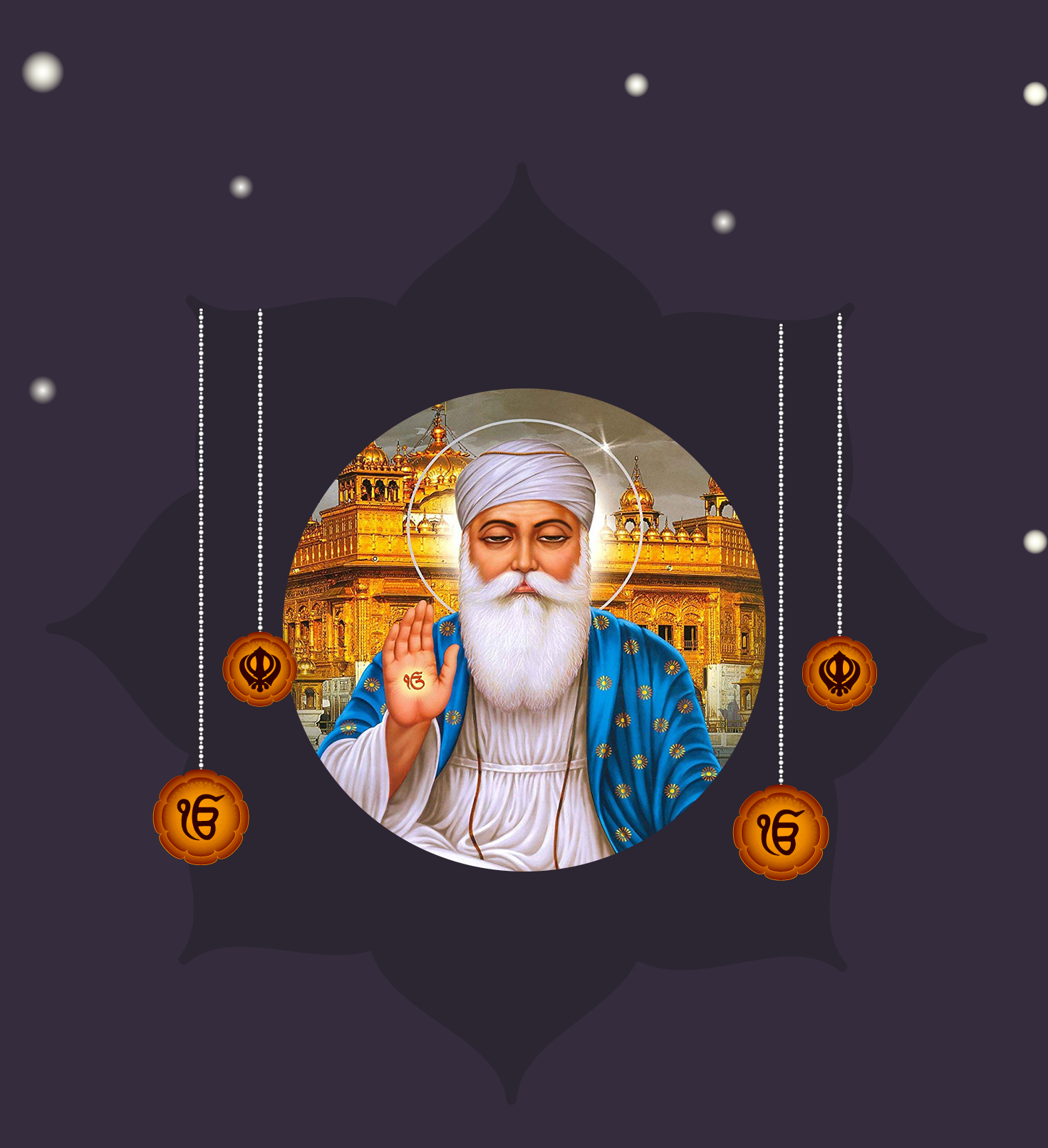
Sri Guru Nanak Dev Ji Prakash Purab The First Sikh Guru and the creator of Sikhism was Guru Nanak Dev Ji. People refer to him as Baba Nanak. The Sikhs have ten Gurus. Gurpurab, also known as Guru Nanak Jayanti, is observed on his birthday. In a village in what is now Pakistan, Lahore, Guru Nanak Dev Ji was born. At an early age, he began to attend all places of worship.
He allegedly traveled to different locations to disseminate his religious beliefs. He blended the human message from all faiths. His life was profoundly impacted by Sufi teachings. The "Guru Granth Sahib" contains the teachings of Guru Nanak Ji. The writing is in the language of Gurumukhi. For Sikhs, who venerate it as a Guru, it is a sacred text. Three primary lessons are imparted. To control one's shortcomings, one should share and support the poor, make money without defrauding anyone, and repeat the name of God. If one recalls God every day, one can conquer their weaknesses such as pride, greed, rage, and ego.
Guru Nanak Ji thought that everyone possesses the one true god. The only truth in the world, according to him, is God. He propagated the ideas of goodness, equality, love, and truth. He believed that everyone should pray to God directly and was against priests and rituals. Guru Nanak Ji is a symbol of all people. He used Sikhism to propagate love. Sikhs adhere to him and make an effort to assist everyone. Everyone receives free food service in every Gurudwara.
Sikhs and Punjabi groups alike commemorate Guru Nanak Jayanti, also known as Guru Nanak Gurpurab, with great zeal and enthusiasm throughout numerous regions of India. The main focus of most Sikh celebrations is the birth of their ten Gurus, who shaped the religion and preached the value of devoted religious practice. The celebration of Guru Nanak Gurpurab honors the birth anniversary of Guru Nanak Dev Ji, the first Sikh Guru and the man behind Sikhism, as the name implies.
Guru Nanak Gurpurab is a big parade that is observed with much dedication and merriment!
1. Two days before the actual day, the Sikhs begin an Akhand Path, which is an uninterrupted reading of the Guru Granth Sahib Ji.
2. People participate in a lot of Sewa, offering their selfless service by clearing the road ahead of the procession for the Palki or Palanquin and giving out free food and drinks to everyone, regardless of caste or background. Processions are organized in various regions of states like Punjab and Delhi.
3. The Panj Pyaras, also known as the Five Beloved Ones, lead these processions while bearing the Sikh flag, Nishan Sahib. Being the first to be baptized in the Amrit Sanchar Sikh initiation process, the original Panj Pyaras were instrumental in shaping the history of Sikhism.
4. Devotees also execute a martial technique called Gatka and sing hymns in worship of their lord throughout the parade.
5. The singing of Asa di Var, the morning prayers, marks the end of the Akhand Path on the day of the Gurupurab. People then go to the Gurdwaras to make offerings, receive blessings, listen to uplifting hymns, and de-stress.
6. The Gurdwaras are all exquisitely decorated with flowers and plush furnishings. At night, light bulbs illuminate them, creating a breathtaking scene.
Since it's a special day, a staggering amount of people show up at the Gurdwaras with their families and friends. Outside the Gurdwaras, there are typically a lot of booths offering a wide variety of delectable food as a sort of Sewa; inside, everyone is welcome to partake in the communally prepared cuisine known as Langar, regardless of caste or community. All day long, delectable Karha Prasad is also provided. In order to express and spread their happiness, people also give sweets to other people.